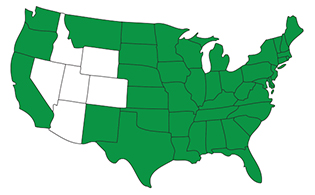

Lawn CARE PLANS
Plan Comparison
Find the plan that best suits your lawn’s unique needs.
TruPro℠
Top pick
As the official treatment provider of the PGA TOUR, we've learned a thing or two. With this plan, we’ll maximize your lawn’s potential. The best possible care. For the best-looking lawn. At a price you’ll love.
TruCore℠
TruCore combines advanced weed control and fertilization for a healthy, lush lawn at a great value.
TruBasic℠
Treat your lawn to partial season weed and nutrient services.
Pest Control Plans
Plan Comparison
Find the plan that best suits your lawn’s unique needs.
TruDefense℠ Mosquito Control
Target mosquitoes where they live to reduce their numbers in just 24 hours.
TruBarrier℠ Perimeter Pest Control
Prevent pests from getting inside with a barrier of protection.
Flea, Tick & Outdoor Nuisance Pest Control
Put a stop to active and persistent pests in your outdoor space.
Enter your ZIP Code to find your branch

 Branch Finder
Branch Finder













Facebook
X
Youtube
Copy Link
Email